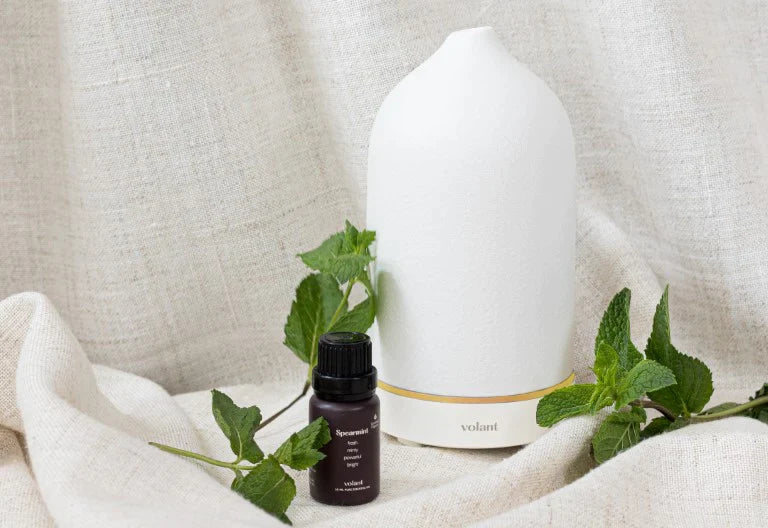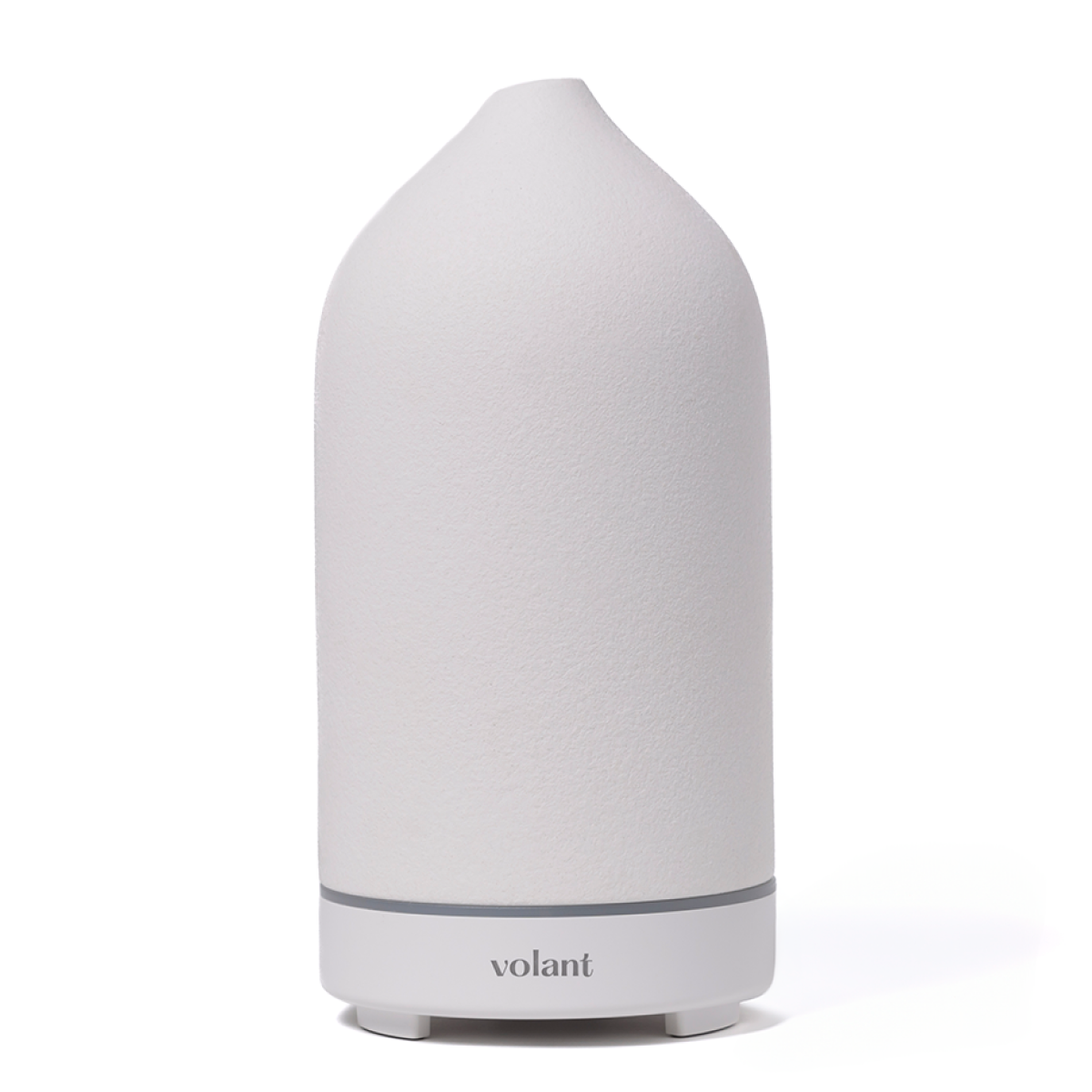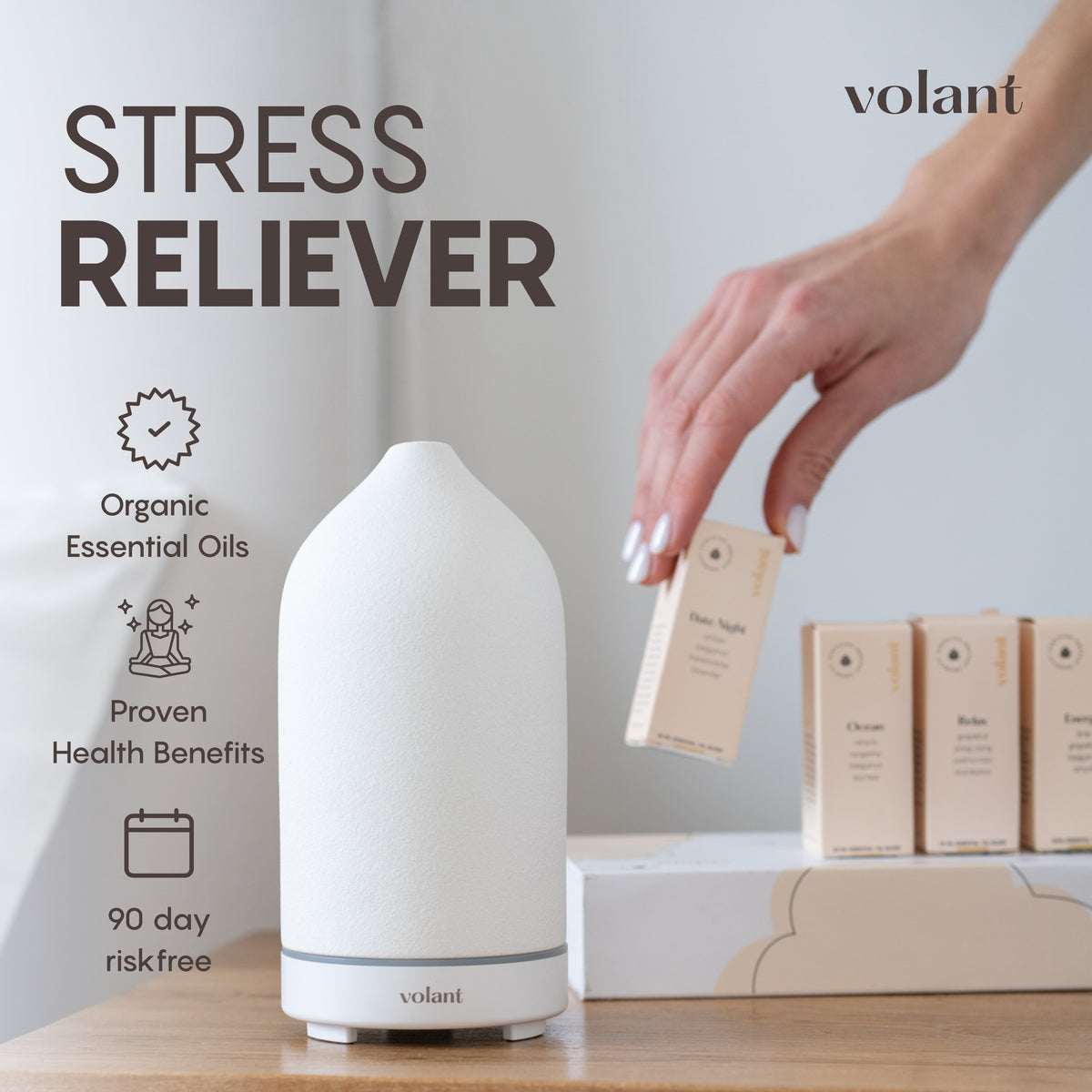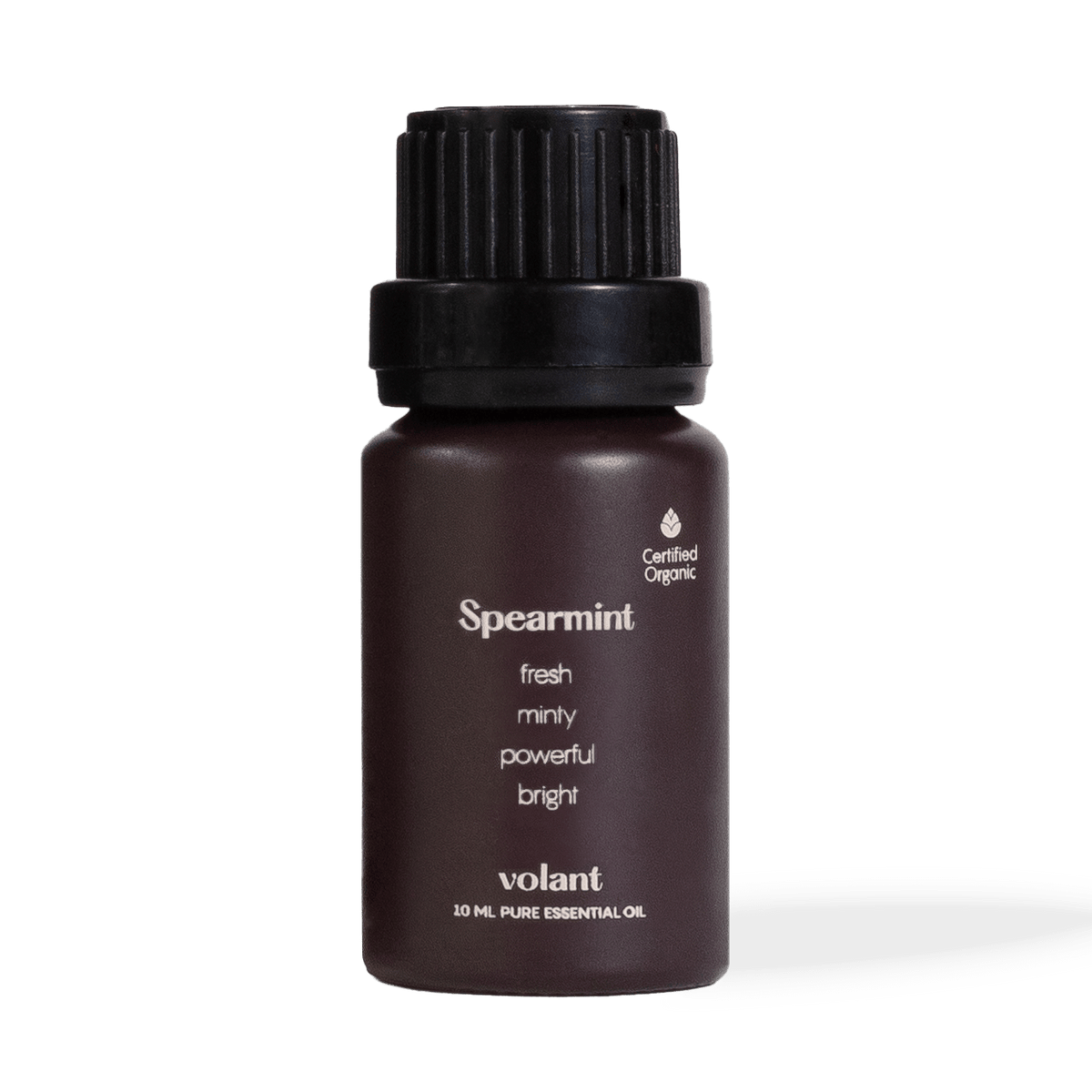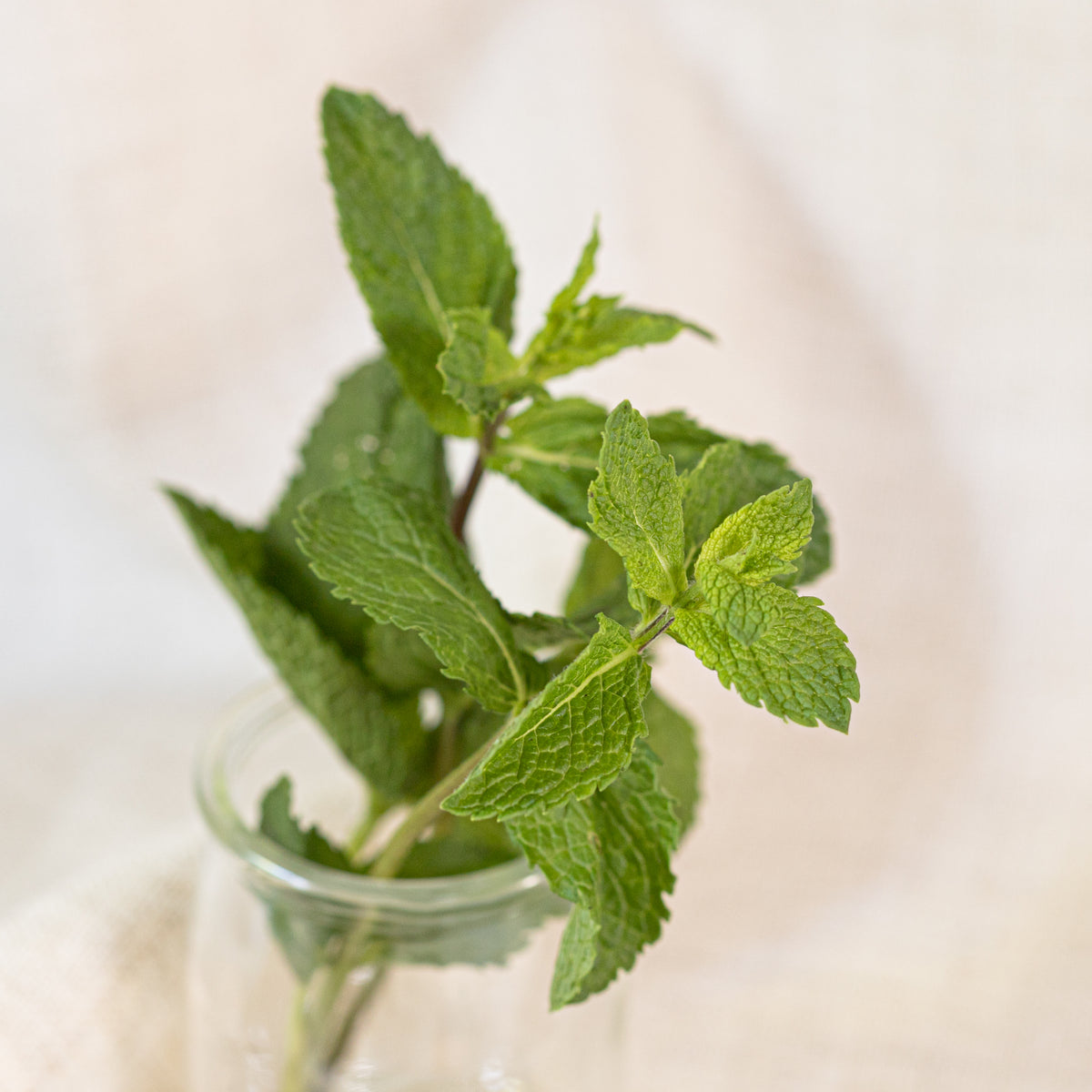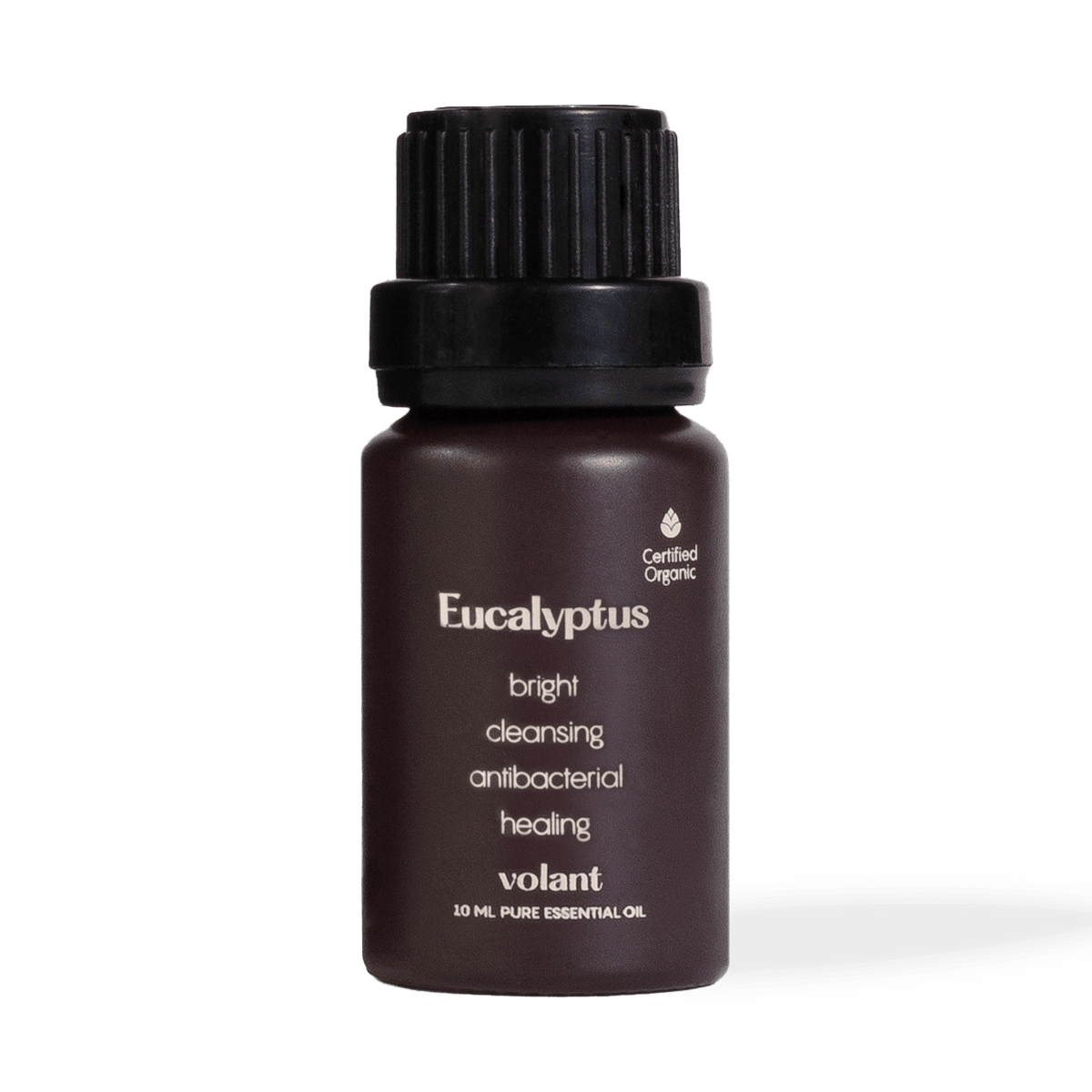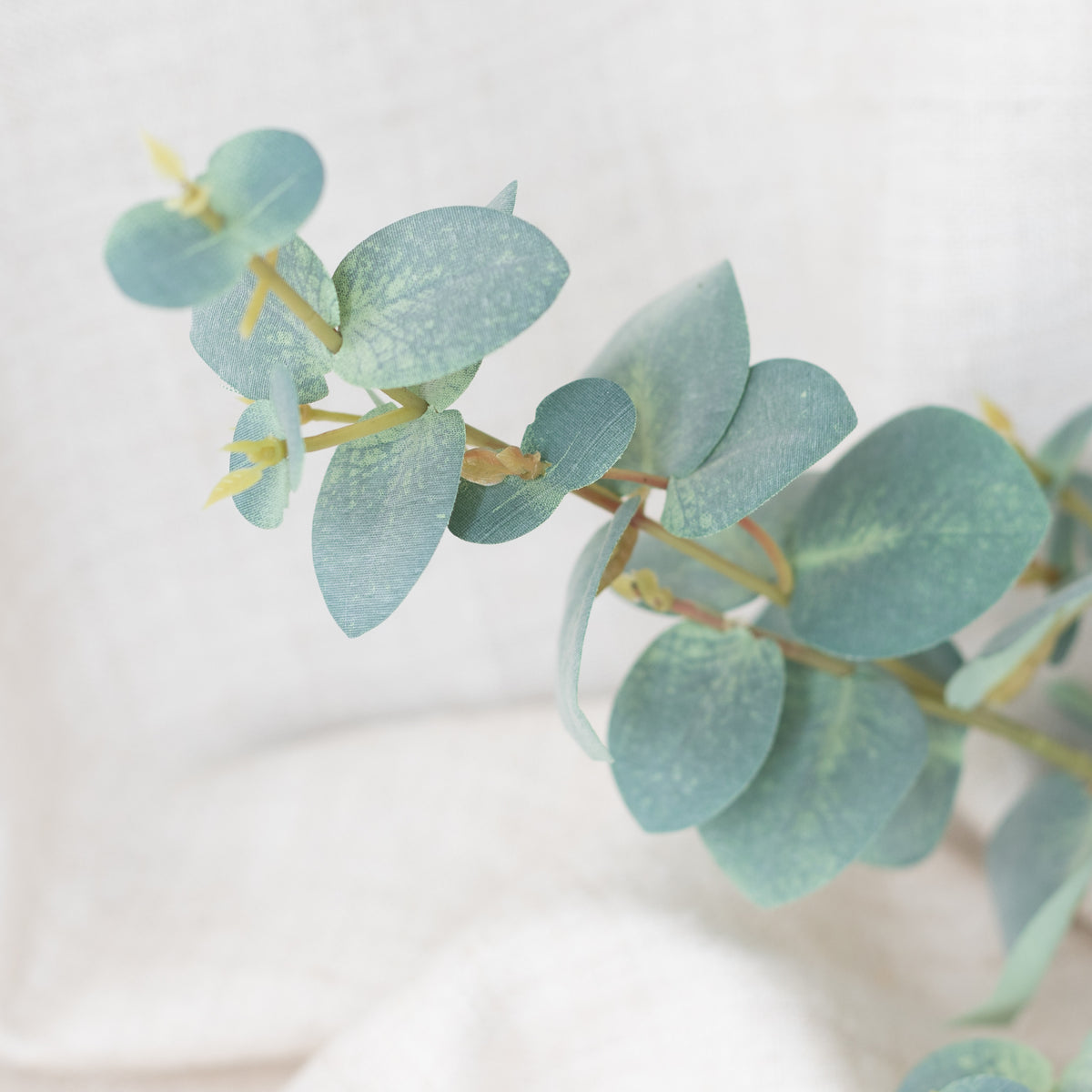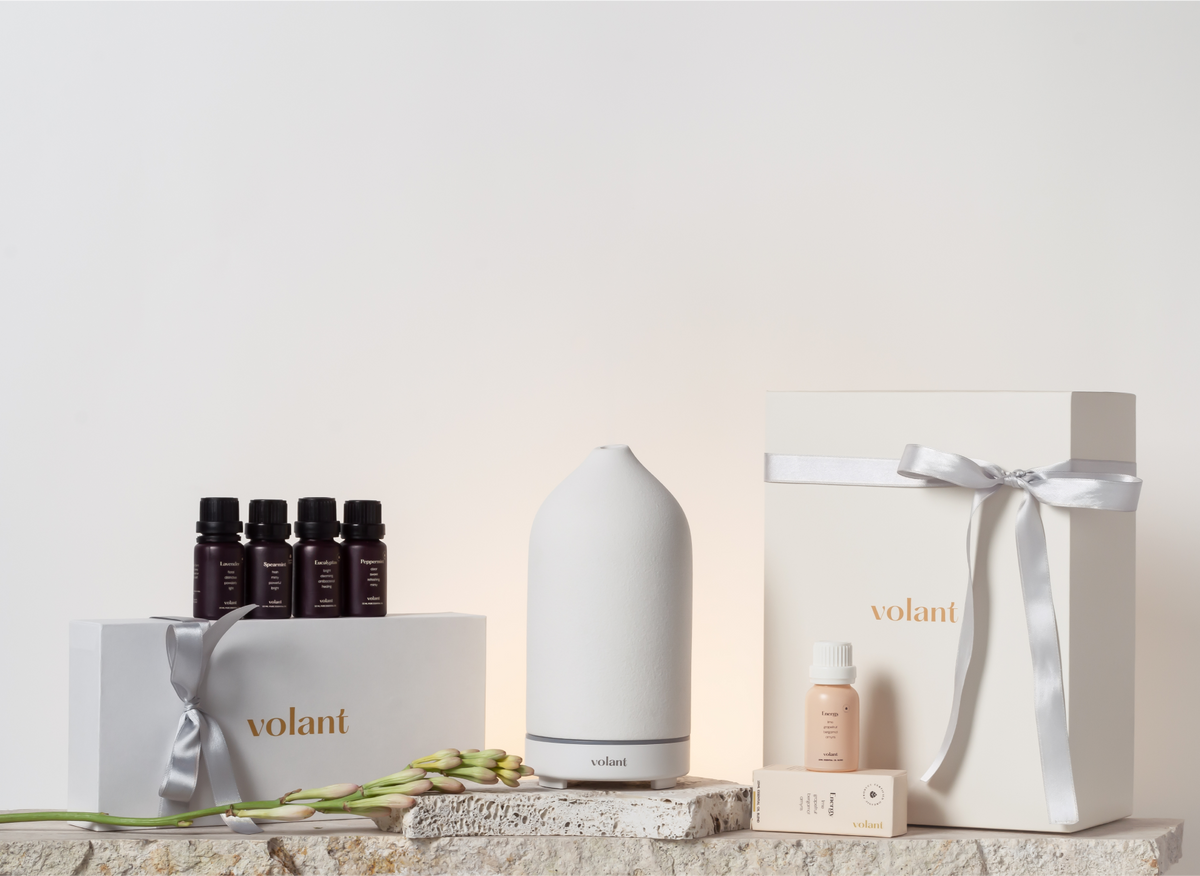It can be used in a variety of ways, including aromatherapy, massage therapy, topically, cosmetically, and medicinally. But there are some things you need to know when using spearmint essential oil for skin problems and other purposes. You need to be aware of its possible side effects and how it interacts with other medications you may be taking. Here’s everything you need to know about this oil.
What is spearmint essential oil?

Obtained from the Mentha spicata plant, spearmint is so-named because of the shape of its leaves. You may also know it as Garden Spearmint, Green Mint, Our Lady's Mint, or Spire. It’s popular as a flavoring agent for a range of oral hygiene products like dental floss, mouthwash, dental picks, dental sticks, and toothpaste…and yes, even chewing gum. This is because it leaves you with a cool, tingling sensation in your mouth that makes it feel clean.
Spearmint is thought to be the oldest of the mint plant family with evidence of it being used to treat a range of conditions dating back thousands of years. A popular option is using spearmint essential oil for headaches, to relieve indigestion, bloating, gas, nausea, and to clear the voice.
Herbalists and physicians such as Pliny the Elder of Ancient Rome prescribed mint to revitalize the body. It was when spearmint was introduced into Britain in the 5th century that it became more officially known for its medicinal properties. These days we know that you can use spearmint essential oil for hair growth as well as to deal with respiratory issues, and even combat the common cold.
Spearmint essential oil - quick facts
🍃 Latin name: Mentha spicata
🍃 Country of origin: 🇨🇳 China, Europe, 🇮🇳 India, and the Middle East
🍃 Scent note: Top. Cooling & refreshing with a peppery slant
🍃 Annual production: 110,000 metric tonnes (mint oil)
🍃 Popular uses: Congestion, headaches, stress relief, focus, relaxation
How is spearmint essential oil made?

Spearmint essential oil is extracted via steam distillation from the plant’s flowering tops, leaves, and/or stems. Extracted essential oils from this plant range in color and can be anything from clear to pale yellow or even pale olive. However, no matter what its color, its scent remains the same and is always fresh and herbaceous.
Steam distillation can be described as a separation process that purifies temperature-sensitive materials, which is what natural aromatic compounds are. Dry steam gets passed through plant material and these vapors then undergo condensation before being separated and collected in receivers.
Benefits of spearmint essential oil

Spearmint essential oil has a wide range of benefits. Some of the main benefits of spearmint essential oil include:
- 🍃 Relieving congestion
- 🍃 Digestion
- 🍃 Hair care
- 🍃 Cognitive function
Let's take a look at each of these benefits of spearmint essential oil in more detail.
Spearmint essential oil for congestion

Spearmint helps reduce inflammation in the airways, allowing for easier breathing. It is commonly used for respiratory conditions such as colds, coughs and asthma.
Spearmint essential oil for digestion

Spearmint essential oil is very commonly used to relieve the symptoms of gas, indigestion, nausea, and vomiting. This is due to its carvone compound naturally found in the plant, which inhibits digestive tract muscle contractions.
Spearmint essential oil for excessive hair care

Spearmint is thought to help reduce androgenic or male-like characteristics in women, including excessive hair growth or hirsutism. In addition, its tingling after-effects will feel nice on an itchy scalp, and like many essential oils, it has antibacterial and antifungal activities, making it useful for a healthy scalp.
Spearmint essential oil for cognitive function

Spearmint essential oil was used in traditional Iranian medicine for various health concerns including headaches. Spearmint has also been recently found to enhance cognitive functions such as attention, memory, improved mood and even enhanced sleep.
How to use spearmint essential oil
Spearmint essential oil can be used in a variety of ways, depending on its intended purpose.
Here are some of the most common ways to use spearmint essential oil:
- 🍃 Inhalation
- 🍃 Topical application
- 🍃 Pillow mist
Let’s take a look at each of these uses of spearmint essential oil in more detail.
Inhalation of spearmint essential oil

Inhaling spearmint essential oil is one of the best and safest ways to enjoy its advantages. Do this by adding a few drops to a diffuser or to a bowl of hot water that will then emit a scented mist or steam.
Not only will you be able to reap the benefits of the revitalizing aroma of spearmint essential oil for better attention, focus and mood, but you’ll be able to relax better as well.
Aromatherapy is also the best way to use spearmint essential oil for congestion if you have a cough, cold, asthma, or other respiratory issue.
Don’t forget you can blend spearmint with other essential oils too. Experiment with aromas like basil, eucalyptus, lavender, peppermint, or rosemary until you find something you like.



